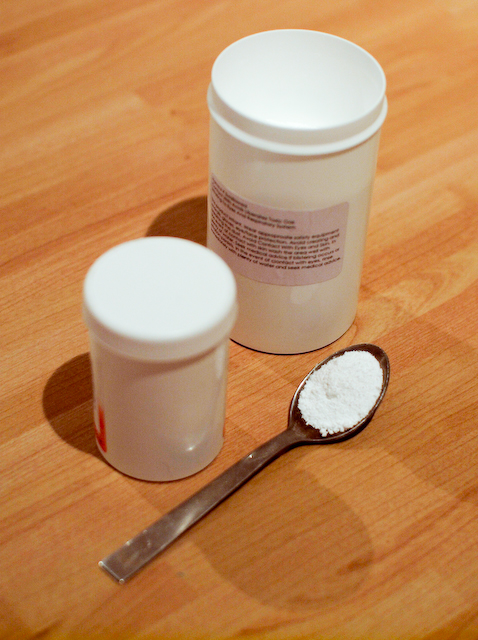Getting Prepped

First of all you’ll need to gather some essential bits and pieces, I talked about basic equipment here. This stuff really is the bare minimum and shouldn’t set you back too much. Once you have it you’ll only need to make a few gallons of wine to return your investment. I can assure you it will be well worth it.
Nutrients, Acids and Other Additives
Just like in your kitchen where your cupboards are stocked with staples,. for the country winemaker apart from the actual ingredients you need to make the wine there is also a similar set of staples that you should always have to hand. When you have these things you’ll be ready to make any wine as soon as the ingredients are available, so what are they?
Yeast Nutrient: Yeast is a living organism that when added to a must (unfermented wine) will look to grow and reproduce. Having a lot of healthy yeast is essential to winemaking because they are the organisms that turn all the sugars available into alcohol. To grow and reproduce they feed on the sugar which will be in plentiful supply of course but also need other organic compounds to thrive. These organic compounds aren’t always present in enough quantity in fruit and especially flowers and vegetables. To get around this problem and ensure an adequate amount of healthy yeast are present we use a nutrient.
Yeast nutrients are readily available from your home brew store or online and contain various compounds to ensure your yeast can grow and reproduce at a fast rate and will ensure your wine doesn’t stop fermenting half way through.
Campden Tablets: When making wines with wild ingredients like fruit, flowers or vegetables there will be a whole variety of bacteria and wild yeasts present. Whilst they aren’t harmful and won’t make you sick they can spoil your wine turning it to vinegar which is of course unpleasant to drink. To prevent this a campden tablet can be added to the pulped fruit and will prevent those spoilage bacteria and wild yeasts from ruining your wine.
Once the campden tablet is added a compound called sodium metabisulphate is introduced to the ingredients which sanitises the must and destroys any wild yeast but has no adverse effects on the flavour of the wine. The must is left to stand for 24 hours then a wine yeast is added to get fermentation off to a flying start.
Acid Blend: A key factor to making a great wine is starting off with the right level of acidity in your must. Acid is needed to keep balance in the wine and also to provide the ideal conditions for the yeast. Yeast thrive in slightly acidic conditions and may be sluggish or slow to ferment if the level of acid isn’t quite right. Grapes are ideal for making wine as they have the natural levels of acid needed already in the fruit, other fruits usually have too little acid so wine makers can employ an acid blend to make up for this.
Acid blends are so called because they are made up of usually 3 different acids in varying proportions, the acids are citric, malic and tartaric which are all natural acid found in fruit. A lot of wine makers use lemon juice in their recipes to provide a boost in citric acid. Using acid blends however is a more convenient and efficient option.
Pectic Enzyme: Some fruits have high levels of pectin, a compound that allows people to turn fruit to jam. The problem with pectin in wine is that it can leave a wine permanently cloudy, whilst you can still drink the wine and it will be perfectly palatable adding one tablet will ensure this doesn’t happen and show your wine off at its best. Adding pectic enzyme to the fruit at the extraction stage will stop any pectin haze and also help extract more body and colour from the fruit you are using to give you a better wine.
Gather Your Supplies
If you have all of these things then all you’ll need to do when you get the urge to make a wine is get the flavour component (fruit, flower or vegetable), sugar and yeast and you’re ready to go. Meanwhile though have these things ready and you’ll never be stuck when it comes to getting a wine started.
